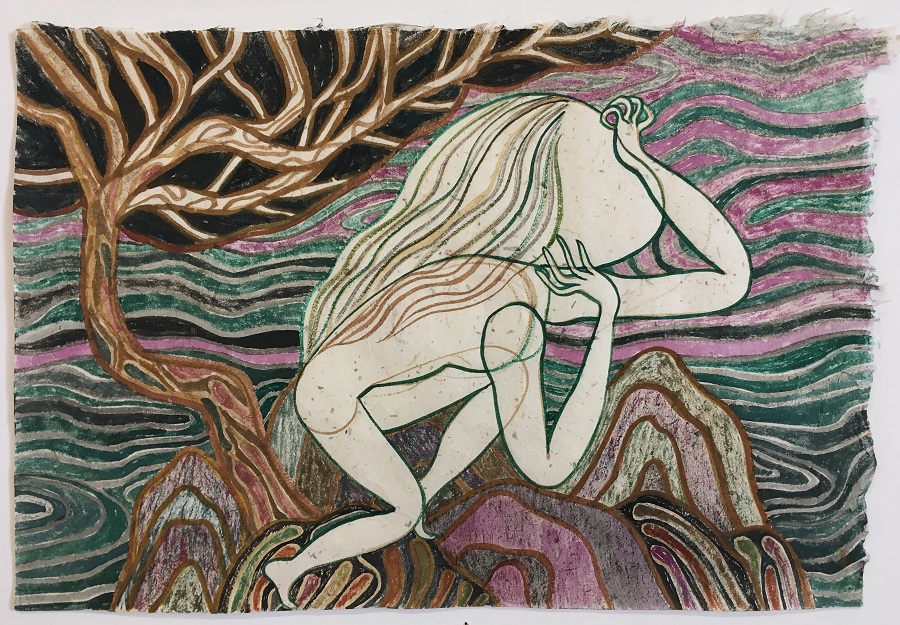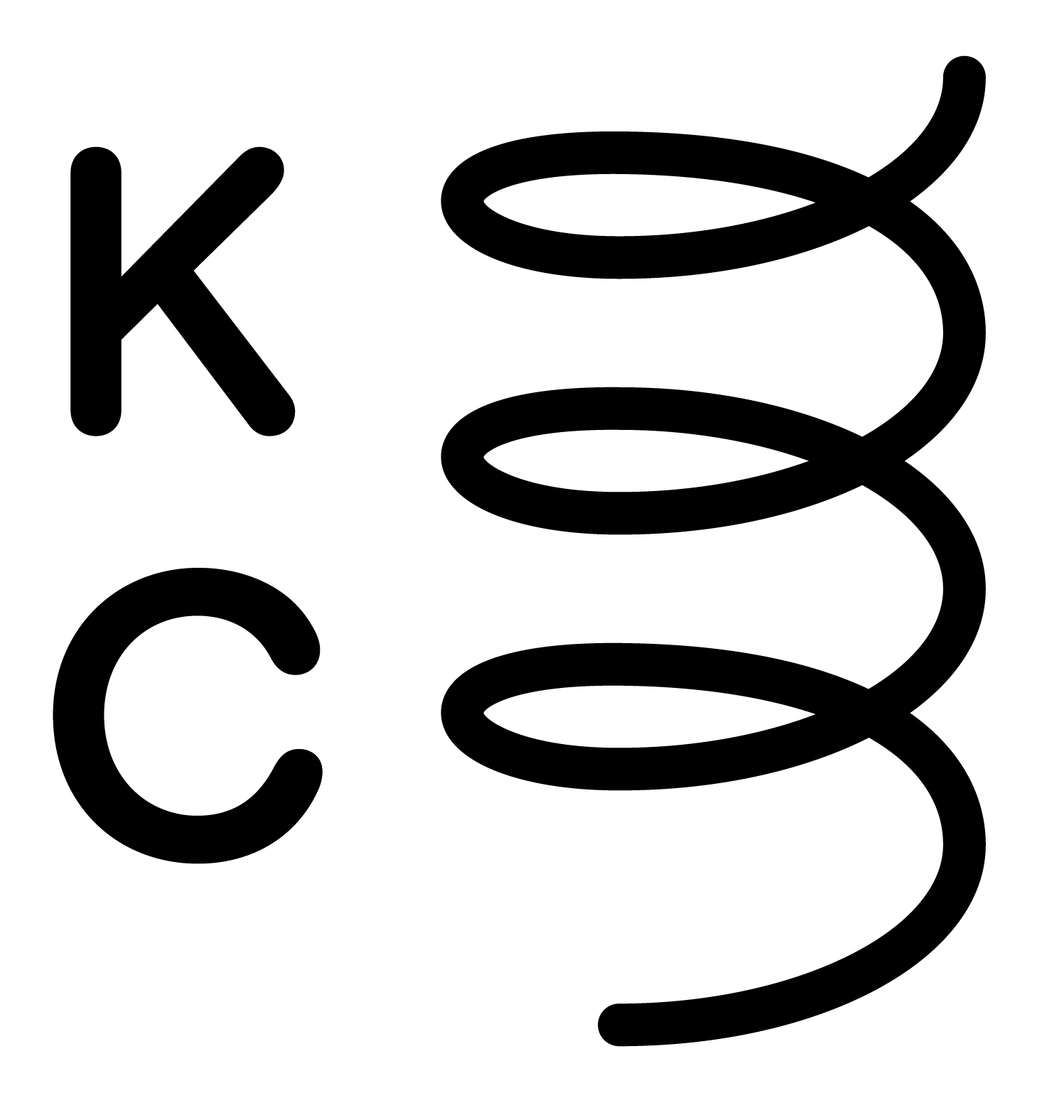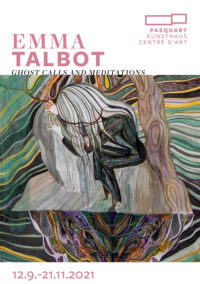

EMMA TALBOT – Ghost Calls and Meditations
12 September 2021 – 21 November 2021
In Emma Talbot’s (b. 1969, GB) work across several mediums drawing is always the starting point for her explorations of some of the most urgent questions of our time, from feminist theory and psychoanalysis to ecopolitics and the natural environment and our shifting relationships to technology, language and communication. Her radiant painted silk hangings and the related animations recall both dream diary and automatic drawing, often connecting word and image to express the lyricism and the pain of subjectivity. Incorporating her own writing as well as references to other literary and poetic sources, Talbot combines painted text, figurative depiction, mark-making and pattern. Her most recent three-dimensional pieces are constructed by hand through simple techniques, such as papier-mâché and stitched soft forms. For this exhibition, when our world is more uncertain than ever, Talbot interweaves the aftermath of the crash of our systems and interpretations of wild and impressive landscapes. These are stories of reconnection with ancient mythology and holistic ways of crafting, making and belonging to survive – all conveyed through a group of keening women.
Through drawing, painting, animation and sculptures, Emma Talbot explores the inner landscape of thoughts and emotions based on her own experiences and memories. These subjective responses are then cast into wider narratives, addressing prevalent contemporary concerns. The shift of registers and readings of her work between the symbolic and the everyday, the autobiographical and the collective, is expressed in the intertwining of text and image in a form of visual poetry.
The relationship between the physical presence of the work and the fluid nature of the subject matter is reflected in Talbot’s choice of materials: hand-drawn and painted onto silk or paper, her images convey immediate representations of her thoughts, sometimes surprising the artist by revealing things that are unconscious. Large paintings on silk in multi-panel installations are suspended from the ceiling, while the mixed-media sculptures transfer the female spirits of Talbot’s drawings to dreamy landscapes, where they are depicted in acts of gathering, journeying and exploring. In her animations, which the artist taught herself how to make during the first lockdown, hand-drawn landscapes of natural beauty, rich with floral and bodily forms, are punctuated by the artist’s poetic texts and accompanied by an other-worldly soundtrack of percussive rhythms, electronic melodies and wailing vocal intonations.
Talbot’s idiosyncratic pictorial language includes distended heads with featureless faces and waves of long hair that often extend into intense rhythmic patterning. The artist has also developed a unique calligraphy to integrate her inner monologue into the work, a mixture of upper and lower cases and differing sizes that enables the maximum variation of emphases. Her work recalls a broad diversity of sources, from Art Nouveau illustration and the lush fin-de-siècle palette of ochre and amethyst, silver and jade, to protest banners and early feminist expressions of the body as landscape.
The exhibition focuses primarily, however, on Talbot’s research into the ancient Celtic tradition of ‘keening’. Keeners were professional mourners, often women, who would visit homes of the recently deceased to perform lamentations and keening songs to help escort souls from this world into the next. These women appear throughout the exhibition in different forms: depicting the cataclysmic event that reconfigures the world; moving through this newly broken world; and exploring and being transported through fantastical landscapes by mythical birds, whilst ghostly apparitions float overhead. All of these narrative threads are drawn together and combined with movement and sound in Talbot’s new animation Keening Songs (2020). Here, we see these women move and mourn and care for one another, encountering different animals, ghosts and unknown spirits along the way.
With this new body of work, Talbot invites us to imagine these unknown futures together and think carefully about how we navigate our contemporary situation of undeniable uncertainty and change. Although she confronts these issues with honesty, Talbot’s work abstains from pessimism and cynicism in favour of hopeful futures, where systems of power have been reconfigured.
Emma Talbot studied at the Birmingham Institute of Art & Design and the Royal College of Art. She is Tutor in Painting at the Royal College of Art’s School of Arts and Humanities. Her work has previously been exhibited at Eastside Projects, Birmingham; Arcadia Missa, New York; GEM Kunstmuseum, The Hague; Petra Rinck Galerie, Düsseldorf; Turner Contemporary, Margate; Drawing Room, London, The Freud Museum; London; Galerie Onrust, Amsterdam; Neuer Aachener Kunstverein, Aachen and Tate St. Ives, Cornwall. She is represented by Galerie Onrust, Amsterdam and Petra Rinck Galerie, Düsseldorf.
In 2020 Emma Talbot was awarded the 8th Mara Art Prize for Women, a biannual award established in 2005 in collaboration with the Whitechapel Gallery in London and Maramotti Foundation in Italy.
The exhibition has been produced in cooperation with Dundee Contemporary Arts, Dundee, Scotland, GB, where it was shown from 28 April to 8 August 2021.
Curator of the exhibition
Felicity Lunn, director Kunsthaus Pasquart
Artist’s talk
Sun 12.9.2021, 2 pm (eng) Emma Talbot in conversation with Felicity Lunn.
Guided tours
Thurs 7.10.2021, 6 pm (dt) Felicity Lunn, director Kunsthaus Pasquart
Thurs 21.10.2021, 6 pm (fr) Julie Carron, art historian
Art at noon
Fri 12.11.2021, 12:15 am Short tour followed by a snack by Batavia. CHF 15.-, registration: info@pasquart.ch


